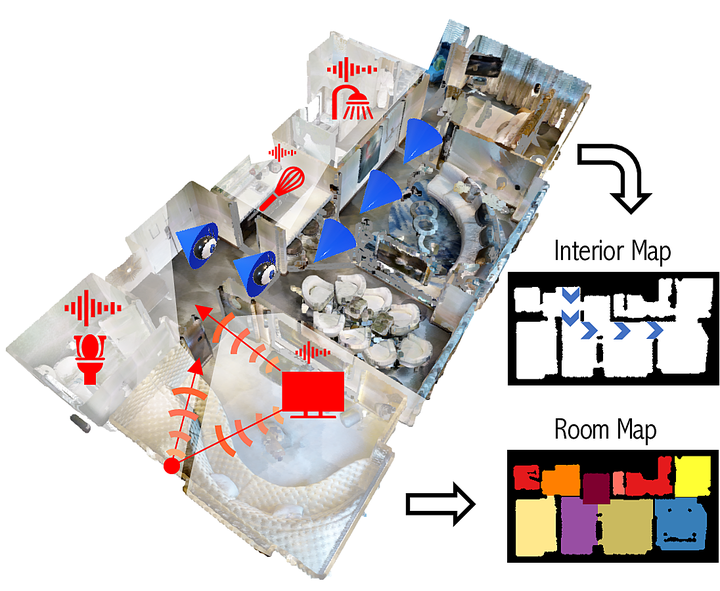Audio-Visual Floorplan Reconstruction

Abstract
Given only a few glimpses of an environment, how much can we infer about its entire floorplan? Existing methods can map only what is visible or immediately apparent from context, and thus require substantial movements through a space to fully map it. We explore how both audio and visual sensing together can provide rapid floorplan reconstruction from limited viewpoints. Audio not only helps sense geometry outside the camera’s field of view, but it also reveals the existence of distant freespace (e.g., a dog barking in another room) and suggests the presence of rooms not visible to the camera (e.g., a dishwasher humming in what must be the kitchen to the left). We introduce AV-Map, a novel multi-modal encoder-decoder framework that reasons jointly about audio and vision to reconstruct a floorplan from a short input video sequence. We train our model to predict both the interior structure of the environment and the associated rooms semantic labels. Our results on 85 large real-world environments show the impact - with just a few glimpses spanning 26% of an area, we can estimate the whole area with 66% accuracy — substantially better than the state of the art approach for extrapolating visual maps.
Interior Prediction Videos
Here we present visualizations of interior maps being constructed online as the camera (cone) moves through environments.
As explained in the paper, we consider two settings:
- Environment Generated Audio: In this setting, the sounds are produced by objects/people in the environments. For example, a person typing on a keyboard in the office, a dishwasher in the kitchen, etc.
- Device Generated Audio: In this setting, the recording device emits a sound (frequency sweep) at each time step.